The augmented reality market is estimated to cross 62 Billion by 2023! What makes this novel technology so valuable?
What opportunities does it have? Here is a deep dive into everything you need to know about AR.
The world that we have today is divided into two realms.
The physical one and the digital one. In case you haven’t already noticed, we spend most of our time in the digital realm.
We swipe on images, pinch and zoom into text, grab screenshots, stream video and do much more in our digital world that would appear a mystery to Einstein or even Nikolas Tesla.
In the physical realm, we have tangible sensory experiences — like touch, push, speed, etc.
Imagine a technology so powerful that it can blur the lines between physical and digital realms?
Such technology can raise the bar of utility, productivity, and innovation in every field.
Augmented reality is that technology.
Almost every top major brand in the face of the world today has started using Augmented Reality.
Apple has already introduced it as a highlight feature in its iPhones.
Other top players across diverse industries like Toyota & Hyundai in automobile, Starbucks in hospitality, IKEA in retail, Adidas in sportswear, GUCCI in fashion have started dishing our immersive experiences using Augmented Reality.
All this hype begs one question. What is Augmented Reality?
Definition of Augmented Reality?
Augmented reality is a technology more than a scientific concept.
Hence, a textbook definition from an authoritative source is hard to come by.
The closest Augmented Reality definition is:
An immersive technology that superimposes a computer-generated image atop physical surfaces or objects in the real world when viewed by the user through an AR device like AR glass, Hololens, smartphone, tablet, etc.
Now let us understand the definition of augmented reality from a layman’s perspective.
Augmented reality is an immersive digital experience in which digital objects or snippets are placed on top of real-world objects of environments.
The information is enriched with the help of data that flows to the device through the internet.
Since the imagery or data that is placed on the real-world environs is augmented, the technology is referred to as augmented reality.
How did Augmented Reality become so popular in recent years?
The truth is Augmented Reality is not a recently created technology.
It has been around since the 1990s. In fact, Boeing has been using AR in its factories for designing circuitry in airplanes.
AR largely remained an enterprise-grade technology because it required large computing resources that were not available for domestic consumers.
However, in recent years with the massive surge in computing power in mobile phones and personal computers, AR has become a consumer technology.
Strides in data connectivity and cloud computing are also positively influencing factors that have led to the quick adoption of immersive technologies like Augmented Reality.
History of Augmented Reality
The general understanding of Augmented Reality is that it is something that came into existence in recent years.
However, the fact is, Augmented Reality has been around for long.
It has been used as an exclusive technology that was accessible and usable only by an elite range of users.
These users had the necessary sophisticated technology, computing resources, and also the use cases to make use of AR.
It is only in recent years when computing devices became so powerful and capable of performing high-definition media logistics, that AR came into the spotlight as a consumer technology.
The idea for AR has been around since 1935. Stanley.G.Weinbaum in his sci-fi novel Pygmalion’s Spectacles refers to a pair of goggles through which people can see virtual senses like sight, smell, touch, and taste.
The first real AR application was created by Ivan Sutherland, a Harvard Professor and his student Bob Sproull.
They created what is known as the Sword of Damocles — a head-mounted display hanging from the ceiling through which users can view computer graphics. The graphics were created in such a way that it made the user experience an alternate reality.
It was in 1990 that an industrial use case for Augmented Reality was found.
Two Boeing researchers — David Mizell and Thomas Caudell created a head-mounted display (HMD) that super-imposed a computer-generated diagram of the plane’s circuitry on aboard. The display calculated the exact positioning of the diagram by calculating the distance of the user’s head from the board.
Source: Medium
In hindsight, AR was meant to be an industrial technology.
In fact, Tom Caudell referred to the technology as ‘Industrial Augmented Reality’.
But, today, in 2020, AR has become a household technology. Almost anyone with an internet-enabled mobile or desktop can experience AR at its best.
In fact, Apple and Google have released their own AR SDKs that will enable app developers to infuse AR experiences into their mobile applications.
How does Augmented reality work?
What makes AR bridge both the physical and digital worlds?
What is the under-the-hood technology that enables AR to achieve this feat?
Let’s decode the inner mechanics of AR.
Augmented reality uses a host of technologies like computer vision, geo-location, simultaneous localization, and depth tracking among many others.
These technologies make it possible to superimpose digital media atop physical objects.
These technologies capture real-time imagery, render it and transfer them to the servers where AR content is hosted, blends them together and serve them to the end-user.
Sounds intriguing? Let’s break it down with an example.
Let’s take the example of a digital image of the Chocos cereal box image.
Now AR can make this cereal box appear superimposed on any physical surface or object.
For example, on a dining table, on a couch, on a stretched out the palm and so on?
The AR app uses the user’s device camera to capture the real-time physical environment.
Computer vision (which is often aided by cognitive computing technologies like Artificial Intelligence & Machine Learning) captures the user’s rea-time environs.
Technologies like geo-location simultaneous localization and depth tracking measure the various dimensions in which the image has to be imposed.
Without these technologies, the digital image will appear distorted and out of proportion when they are placed on real-life environments.
The image below shows in a simple way how AR collects digital images and places them on physical surfaces.
Source: Blippar
Let’s take a deeper look at the various technologies that power Augmented Reality.
Basically there are three technologies that power Augmented Reality.
The three technologies that power Augmented reality
- SLAM (Simultaneous Location and Mapping)
- Depth tracking
- Image processing and projection
These are the three major technologies that empower Augmented Reality to superimpose digital images atop physical surfaces.
1. SLAM (Simultaneous Location and Mapping)
SLAM works with the help of localizing sensors in a device like a gyroscope or an accelerometer.
It uses this hardware to map an entire space or an object. Once the image mapping is completed, SLAM performs an AR image simulation which projects the image on physical spaces (as seen through a screen) in the right dimension.
Most present-day AR SDKs like Apple ARKit3 and Android’s ARCore come with integrated SLAM. Developers do not have to develop an AR app development simulation from scratch.
2. Depth tracking
Depth tracking is the measure of the distance of an object from the camera sensor.
It is used to determine the size and dimensions in which the virtual object has to be placed in the actual environment. Think of how your camera works when shooting portrait mode pictures.
It focuses on the image within a specific distance and blurs the rest of the background.
Similarly, depth tracking measures the distance of the object from the camera and ignores the rest of the background so that the image can be processed for AR simulation.
3. Image processing and projection
Image processing and projection is the final phase of the AR stimulation.
It’s in this stage that the AR program creates the final render of the image and projects it to the user’s device.
The user’s device could be dedicated Hololens, a mobile device, a desktop or any specially created AR device (like Google Glasses).
These technologies enable the AR application to deliver an immersive reality to the user however, there are several ways how the application detects objects.
Object detection in Augmented Reality
Object detection in augmented reality happens in two ways:
- Trigger-based
- View-based
Trigger-based object detection uses physical cues like markers, symbols, logos, icons, etc.
View-based object detection uses actual views of physical environments like roads, buildings, landscapes, etc.
Eachobject detection method enables AR to deliver a user experience that contrasts with each other.
Trigger-based object detection can take the form of:
- Marker-based augmentation
- Location-based augmentation
- Dynamic augmentation
Similarly, view-based object detection can take the form of:
- Superimposition-based
- Generic Digital Augmentation
Exploring the various types of Augmented reality devices
The first type of Augmented reality device dates back to the 1900s.
An Irish telescope maker named Howard Grub created a device called the collimating reflector, which is more like the predecessor of modern-day gun crosshairs.
It augmented the user’s vision of the target by eliminating distractions that surrounded it. In a way, this is exactly how modern-day augmented reality devices also work.
The present-day AR devices can be classified into 4 categories:
1. Heads up displays (HUDs)
A HUD is a transparent film-like screen into which an AR application streams data.
The benefit of HUDs is that it does not require the user to change their focus from their usual viewpoints.
The HUD display blends into the physical environs of the user allowing them to look and consume data dynamically.
A classic example of this is automotive heads up displays.
2. Automotive heads up display
Many luxury car makers like BMW, Audi, Volvo, etc. have HUDs into their vehicle dashboards.
These HUDs cN provide the user with a variety of contextual information like navigation, speedometer reading, distance to destination, obstacles en route and so on.
Source: Texas Instruments
3. Holographic displays
Perhaps these are the most fantasized form of AR devices.
You must have already seen concept models of holographic models in movies like Iron Man, Minority report and the likes.
They work by projecting virtual images into real space. Unlike HUDs, they do not need any surface to project their images into.
4. Smart glasses
The concept of smart glasses was introduced to the world by 2012 by Oakley.
The company’s CEO Colin Baden has been working to project information directly into these lenses since 1997.
Google introduced an even advanced version of smart glasses in the later years. Smart glasses use retinal projection to project visuals or data onto the glass lens.
They are perhaps the most advanced form of augmented reality.
Source: ABI research
5. Handheld or smartphone-based
Of all the other types of AR devices, the handheld or smartphone-based ones are the kinds that are going to achieve maximum popularity.
These types of devices are already billions in number, are easy to purchase off the shelf and do not have any shortcomings like the other type of AR devices.
They are easy to carry, have the better computing power and also display are far better than dedicated AR devices.
In fact, the Apple iPhone is one device that can be considered as the perfect example of this.
The latest models of Apple iPhone allow users to project AR images/text/media onto physical environments.
They are not only super interactive and are slowly finding their way into multiple applications like navigation, customer support and so on.
Here is how Google Maps with AR functionality would be seen through a smartphone:
Source: Techcrunch
The future of Augmented Reality
AR is a Trillion dollar industry. According to PWC’s “Seeing is Believing” report, 2019, “VR and AR have the potential to add $1.5 Trillion to the global economy by 2030. AR will create a positive influence across multiple industries including manufacturing, healthcare, retail, education, gaming, eCommerce, and much more.
The image below shows how AR will boost GDP for countries USA, Asia, APAC, and the rest of the world.
Source: PWC
Here is a detailed look at how Augmented Reality will influence each industry and its future.
Also some Augmented Reality examples that will soon be commonplace.
Future of augmented reality in healthcare
The healthcare industry which touches lives is perhaps one of the best candidates for the AR revolution.
Here are two prime reasons why AR is an excellent fit for the healthcare industry:
- The industry is in desperate need of technology that will help healthcare professionals have quick access to information without the risk of information overload.
- It should also enable a significant reduction in the workload without having to invest in training with a steep learning curve.
The interactive graphical representation of data of AR solves all these challenges.
Perhaps, this is why the industry is poised to grow at an impressive 22% CAGR from 2019 to 2026.
Augmented Reality examples in healthcare
AR has multiple applications in healthcare.
The most promising ones are:
1. Immersive Training
Healthcare professionals deal with delicate human lives.
Their training experience is often hampered because they have to make do with 2D images or videos that have been shot earlier for the purpose.
With AR, each individual healthcare professional can indulge in immersive learning.
They can interact with each human organ, zoom into the image while making annotations or consuming content that is already created for it.
This form of training heightens the conceptual and theoretical understanding of healthcare concepts.
2. Accuvein
For a veteran or even for a beginner, one of the recurring challenges in everyday service is locating the vein in a patient.
Accuvein is an Augmented reality-based application which helps healthcare professionals to quickly locate veins in their patients.
Be it for drawing a blood sample or for visualizing the vein network, AR applications like Accuvein can come in handy.
3. Needle guidance
A trained surgeon knows where his needle is supposed to land.
Nevertheless, the assistance of technology can reduce the errors that could possibly creep in during the tense hours of surgery.
In the near future, we will have AR lenses, glasses or even HUD’s that can help healthcare professionals guide their needles exactly to the intended location in the patient’s body.
Future of augmented reality in education
In the past, psychologists established that students have an attention span that is in the range of 10 to 15 minutes.
However, fast forward to 2020, the average attention span of an individual — be it a student or a full-grown adult has fallen down to less than eight seconds.
The constant ping of notifications, information overload and countless other distractions are to blame for this phenomenon.
Augmented reality with its immersive experience can be the right antidote for the looming challenge that the education sector is facing.
Also, since the data for AR is updated through cloud servers, the educational content that students get is also up-to-date and relevant.
Augmented Reality examples in education
Unlike the existing educational systems which are populated by printed textbooks and physical apparatuses, AR can bring in a dose of immersive experiences.
In the process, it can also create stimulation in students that will expand their attention span and engage them with the content at length.
Here are some AR applications that help with that:
1. Interactive textbooks
Printed textbooks could not hold the student’s attention because the text was not interactive enough for students.
Interactive textbooks that can bring a concept or story to life with visuals can make a difference here.
Textbooks that are embedded with AR markers can be scanned through tablet devices or mobile apps are the way forward for education.
Source: YouTube
2. Find and learn models
Field visits to museums and planetariums may have been great, but the learning that comes out of them can be amplified with the immersiveness of AR.
With AR markers, educators can embed find and learn models into physical spaces, surfaces or even artifacts that students can find and learn more about.
This makes education more of an adventure that demands participation than one-sided instructions from teachers.
Source: Medium
3. Objects modeling
In mechanical engineering or architecture, students have to spend copious amounts of time drawing and sketching illustrations from scratch.
With AR, it is easy to put together common objects or design patterns to create new design models.
This helps improve critical thinking and fosters creativity in students instead of using their time in labor for sketching and drawing illustrations.
Future of augmented reality in marketing
Good marketing drives actions. To drive action one must win the customer’s attention.
Unfortunately, the customer’s attention is lower than that of a goldfish.
In such a scenario, businesses are under pressure to create captivating advertising and marketing campaigns that are not only engaging but also action-driven.
It is here that Augmented reality proves its mettle.
Augmented Reality examples in Marketing
Marketers with some creativity can use Augmented Reality as a powerful tool that can captivate an audience and win their patronage.
Here is some brand that did marketing right with Augmented Reality:
1. Coca Cola
A coca-cola tin on its own has a huge brand recall value.
Coca Cola decided to embrace Augmented reality to immerse its users in a new experience-driven by the power of AR.
The beverage company rolled out an advertising campaign in which users are able to point their phone’s camera at a can of Coke and witness one of 12 stories come to life.
2. Zara
Zara, which has always been ahead in terms of its fashion offerings took shopping experience a step ahead with AR.
Zara created its own Augmented reality app which allowed users to point their phones at a shop window to see the virtual models wearing the dresses of their choice.
What made the app experience impressively was that the models were not static.
Instead, they can be seen posing, moving, and talking which makes it truly an immersive shopping experience.
4. IKEA
IKEA, the Swedish furniture maker has a huge fan following across the world.
What makes their furniture unique is that they are incredibly well-designed as well as affordable.
To help customers shop for the right product of the right color, dimension, and type, IKEA created a mobile app.
The app which is built using Apple iOS 11’s ARKit technology allows users to view the furniture in their real-time locations on a perfect scale.
According to IKEA, “The app automatically scales products, based on room dimensions, with 98 percent accuracy.”
Future of augmented reality in Hospitality
Augmented reality has been long considered as a technology that was reserved for the highly-engaging and addictive entertainment industry.
However, in recent years use cases have also been discovered for a closely related industry — hospitality.
The hospitality industry requires novel ideas to engage and entertain guests. Augmented reality provides restaurants and hotel owners to deliver an interactive experience.
Augmented Reality examples in Hospitality
A major chunk of AR applications in the hospitality industry revolves around the customer, or rather the guest.
We can expect more developments that can facilitate productive working conditions for employees in the hospitality industry as well. Here are some ways how it pulls off to ‘wow’ guests.
1. Interactive menus
Hotel menus usually take the form of one-side or multi-fold printed pamphlets.
If they are not well-designed, the dish names and the prices could be a nightmare to understand.
Also, a plain menu lacks the pull to interact with a new customer who is visiting the restaurant for the first time.
An AR-powered menu can turn an ordinary menu into an eclectic visual experience that can be visualized before placing the order.
To cite a real-world example, HoloLamp is an AR-powered device that lets diners view dishes as 3D images before making an order.
What makes HoloLamp unique is that it does not require the diner to use any additional AR glasses.
2. Reviews & ratings
It is no secret that restaurants and even hotels rely on reviews and ratings to boost their business.
Most often guests decide to give a hotel or a restaurant a go based on the star ratings shown in Google My Business or Yelp.
Augmented reality can display the reviews and ratings of a restaurant digitally on the user’s smartphone when it is pointed at the restaurant storefront or premises.
In fact, Yelp already has an AR-powered review and rating system.
3. Self-guided tours
Self-guided tours might seem like a use case that is more apt for travel and tourism than hospitality.
However, there are hotels that have already started using AR to their advantage.
A good example of this is London’s Premier Inn.
The hotel rooms are embedded with London’s map which when pointed at with the AR mobile app highlights landmarks and destinations that the user can visit quickly.
Source: pocket-lint.com
Augmented reality games
Gaming, which is a subset of entertainment is the biggest space for Augmented Reality to make a splash.
In fact, AR gaming is expected to become a $285 Billion market by 2023.
The prowess of AR as a gaming-centric technology came in 2016 when the whole world flocked outdoors to capture virtual AR-based characters.
These characters were part of the Pokémon GO mobile game which made it even enticing for a global audience.
An AR gaming app uses the smartphone’s camera, gyroscope, GPS location and its clock to identify the user’s location and to superimpose AR animations in physical spaces. Through super-imposing, AR games fare better than traditional games.
They are able to deliver better interfaces, enriched gaming experience and even novel gaming experiences that were restricted in traditional gaming.
Benefits of augmented reality
As an immersive reality technology, Augmented Reality offers several benefits that one cannot turn a blind eye towards.
The most common benefits of augmented reality are:
-
Reduces cognitive overload
One of the perils of the internet and the subsequent information democratization is that, users are bombarded with information from several sources, in various forms and in various quantities.
This makes it difficult, often impossible for the user to distill the exact information that they are looking for.
Even finding basic information would require the user to exert serious cognitive effort.
Augmented Reality, with its superimposing of digital information atop physical objects and surfaces, makes it easy for users to consume information without having to exert significant effort to understand too much information.
-
Real-time updates
Augmented Reality works with the power of the internet.
The user’s device connects to cloud servers through an internet connection and fetches the data that has to be displayed on the user’s real-world scenario.
Since cloud servers can be updated anytime remotely, it becomes easier to update AR scenes and imagery on a real-time basis. The risk of data becoming obsolete is negligible.
-
Minimal technology
Compared to other immersive reality technologies like Virtual Reality, Augmented Reality requires more or less limited tech resources.
To begin with, it works on any decently equipped smartphone.
The need for a dedicated hardware like an AR lens or Hololens is not always necessary.
Furthermore, the latest advancements in AR has made it possible for users to experience it even while browsing websites on a desktop device.
-
Universal adaptability
AR is not designed for a specific type or strata of users.
It’s meant for all types of users who use smartphones. From school-going children to senior citizens, anybody who has a smartphone can make use of Augmented Reality.
That makes it a universally adaptable technology.
Bringing it all together
Augmented reality is not a new-age concept.
Research and prototypes for AR applications have been happening since the early 1990s.
In fact, Boeing the airplane manufacturer has been using the technology to create circuit designs for its airplane models.
AR shot to fame in recent years thanks to the consumerization of digital media and data.
What makes AR popular today is its ability to captivate users with flawless experiences.
The experiences consist of digital snippets of information or animation embedded above physical surfaces or objects.
By now, you must also be aware of the numerous applications that Augmented Reality has in several industries including manufacturing, marketing, education, hospitality among many others.
There is one sentence that sums up the future of Augmented Reality.
It was quoted by Tim Cook, the CEO of Apple. “Augmented reality is a big idea like the smartphone.”

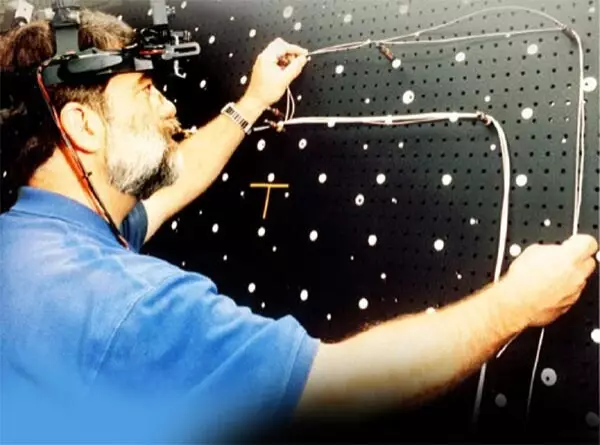
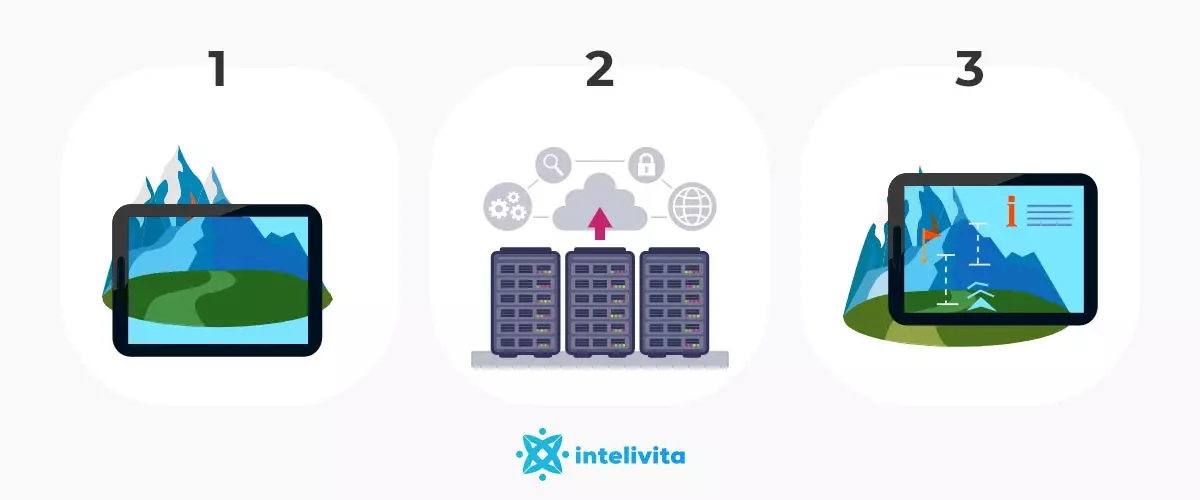
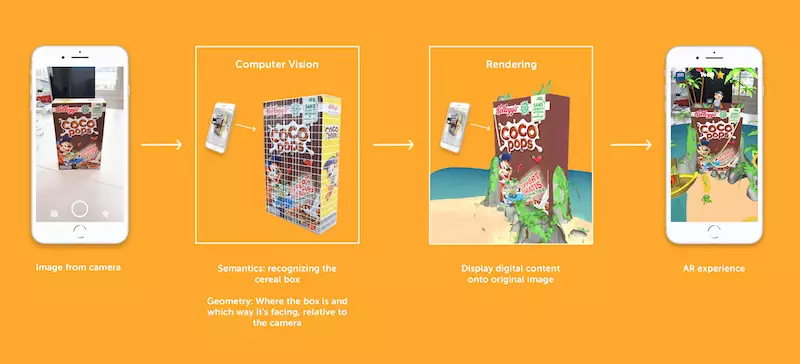

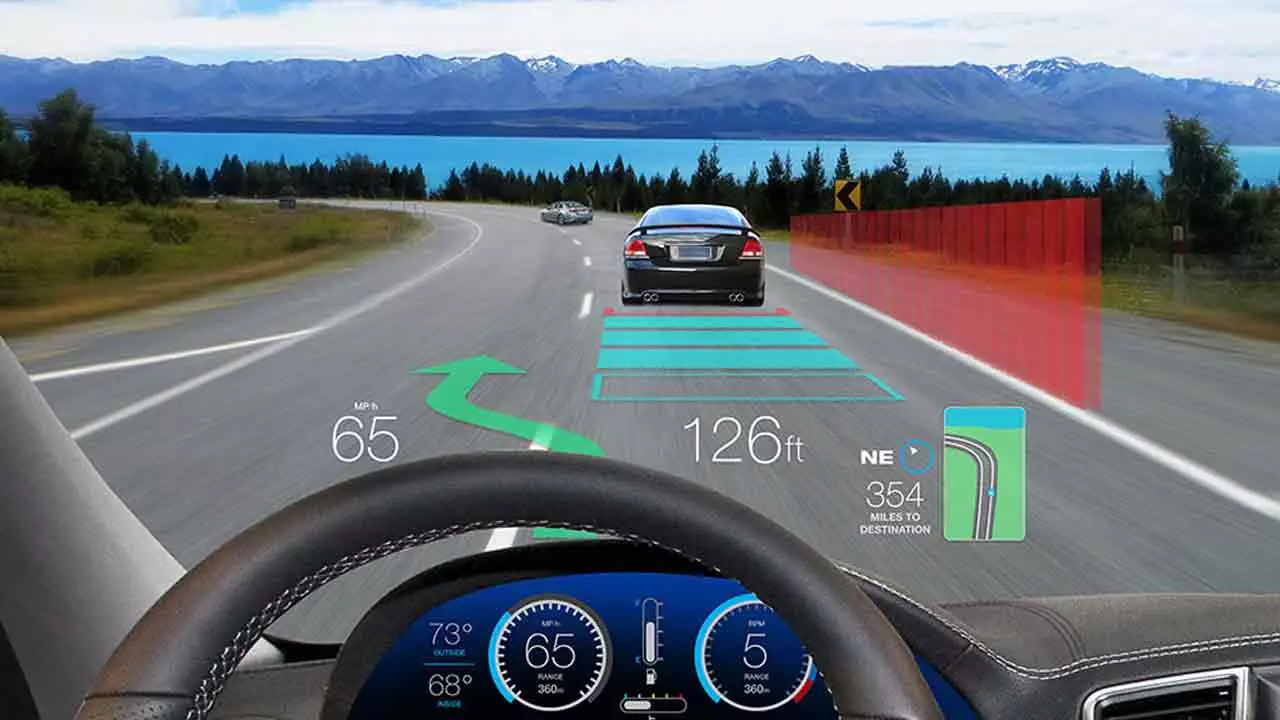
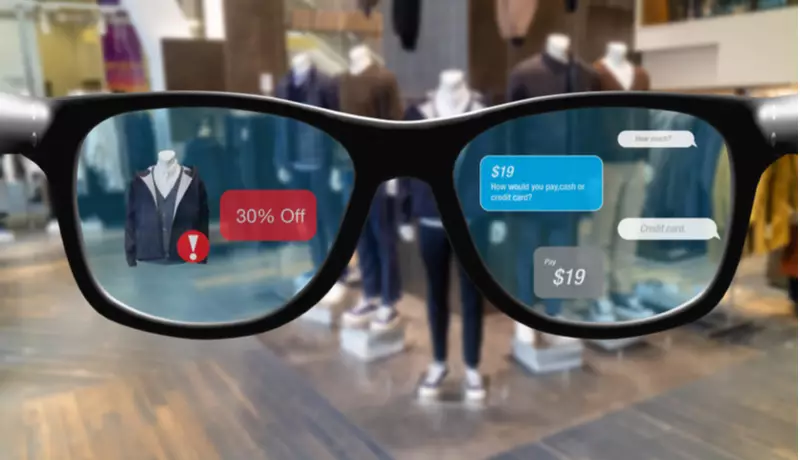
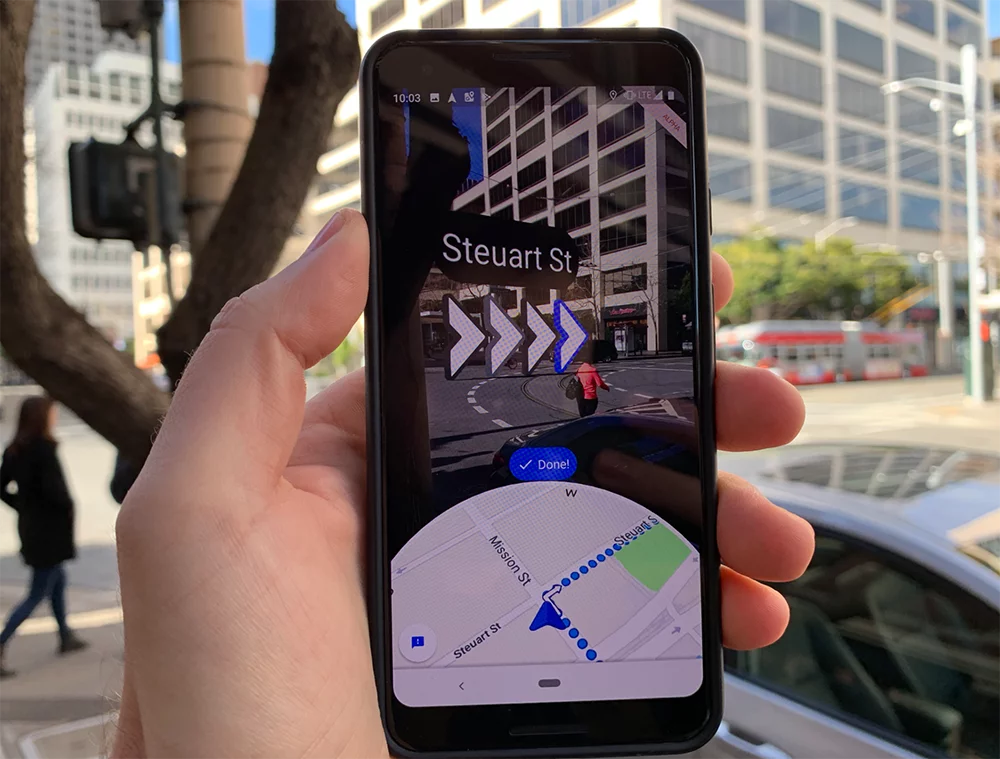
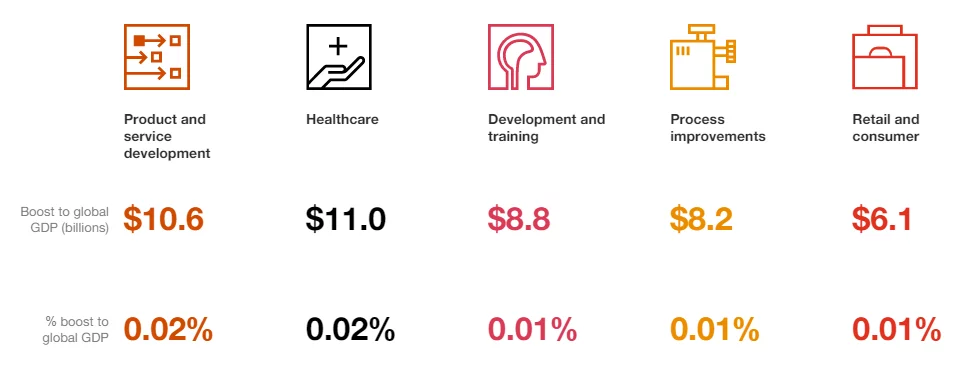

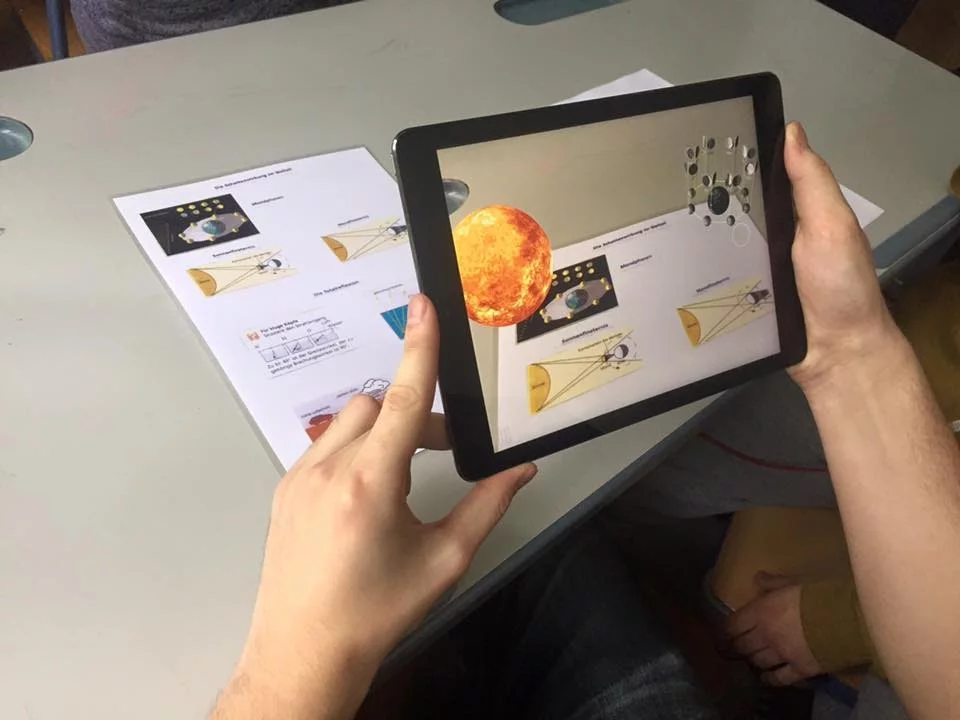
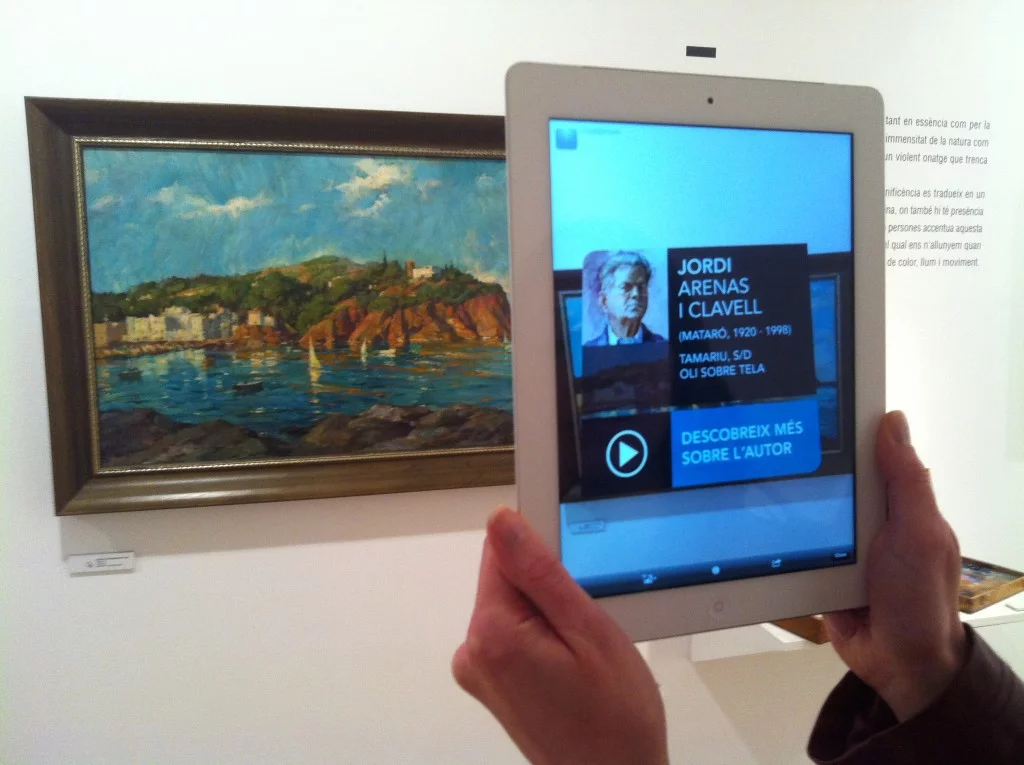
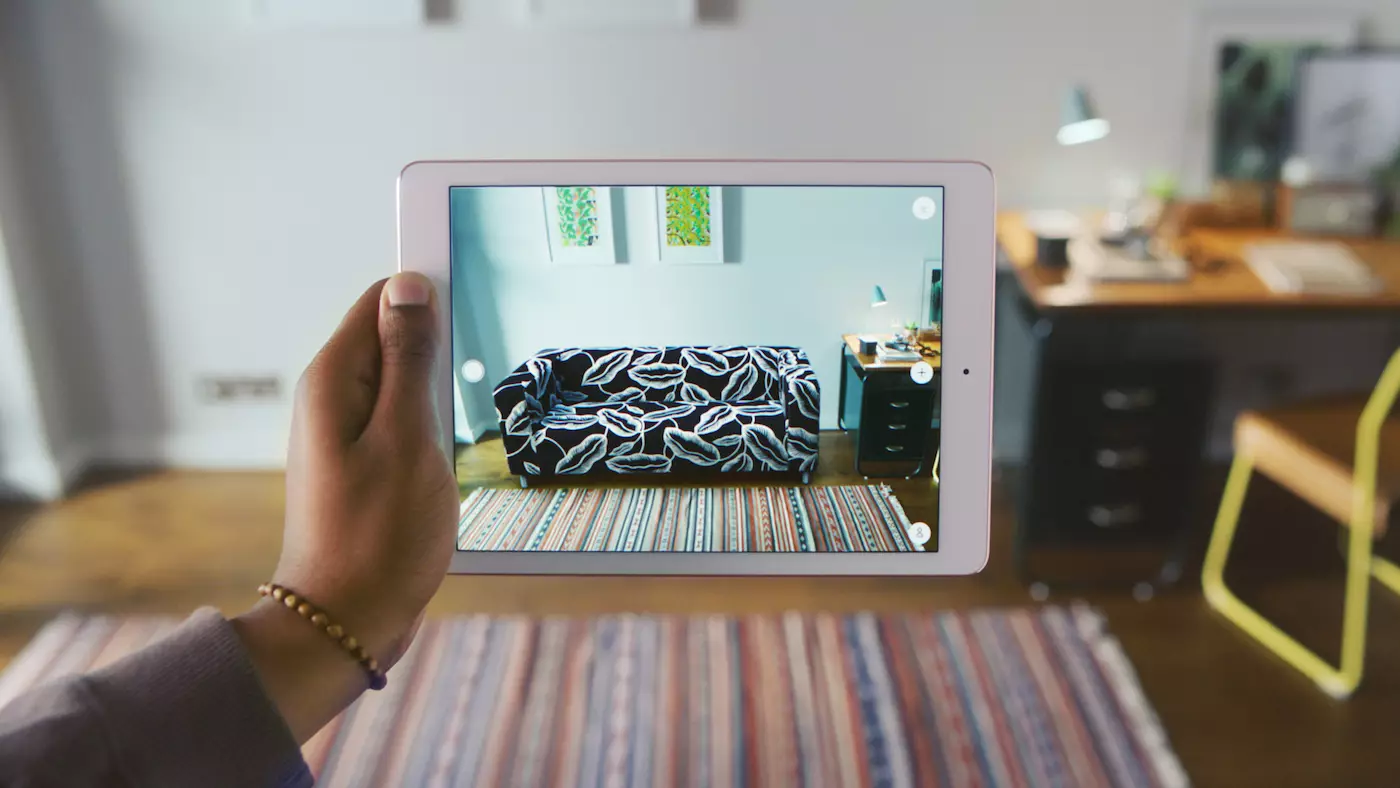
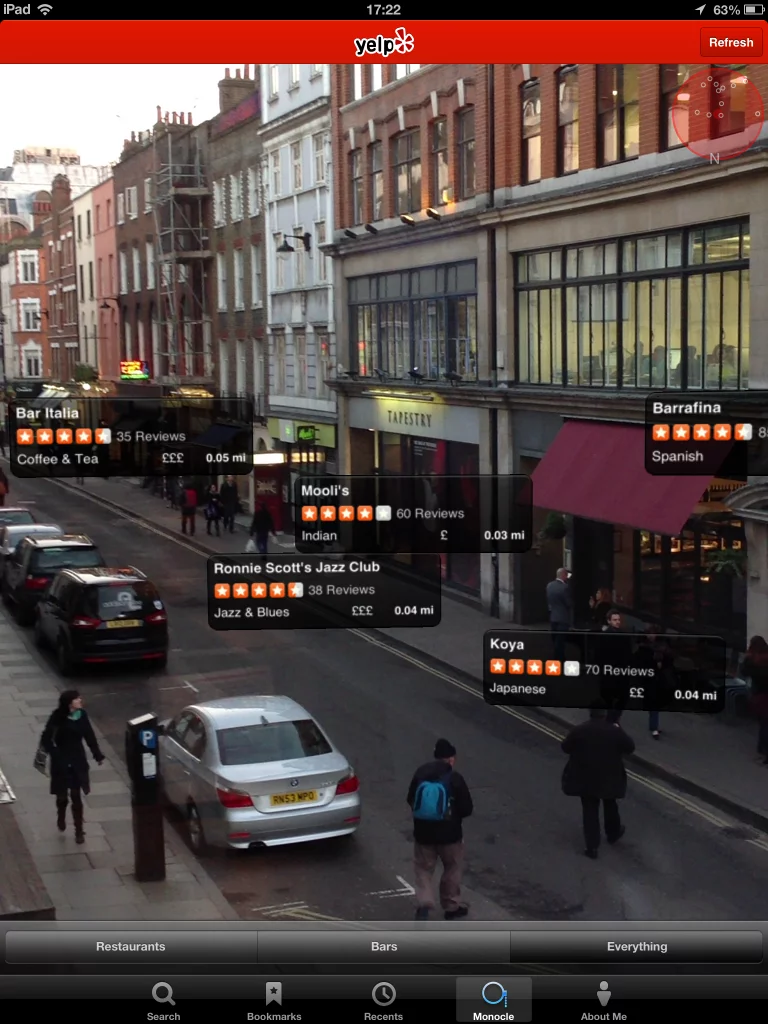
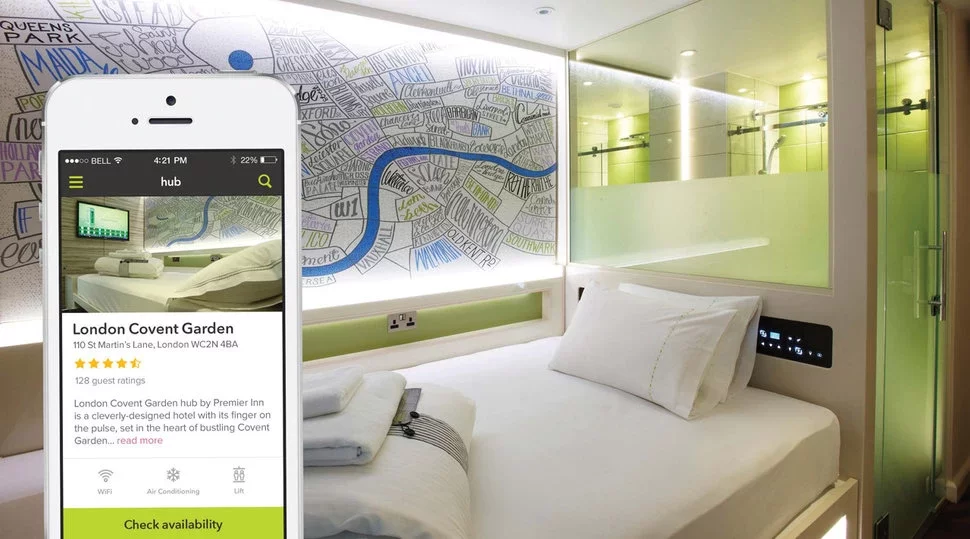


![AR In Real Estate [A Complete Guide Along With Examples]](https://www.intelivita.com/wp-content/uploads/2023/12/AR-In-Real-Estate-A-Complete-Guide-Along-With-Examples.webp)
![Augmented Reality (AR) In Remote Collaboration [Benefits]](https://www.intelivita.com/wp-content/uploads/2023/11/Augmented-Reality-AR-In-Remote-Collaboration-Benefits.webp)

